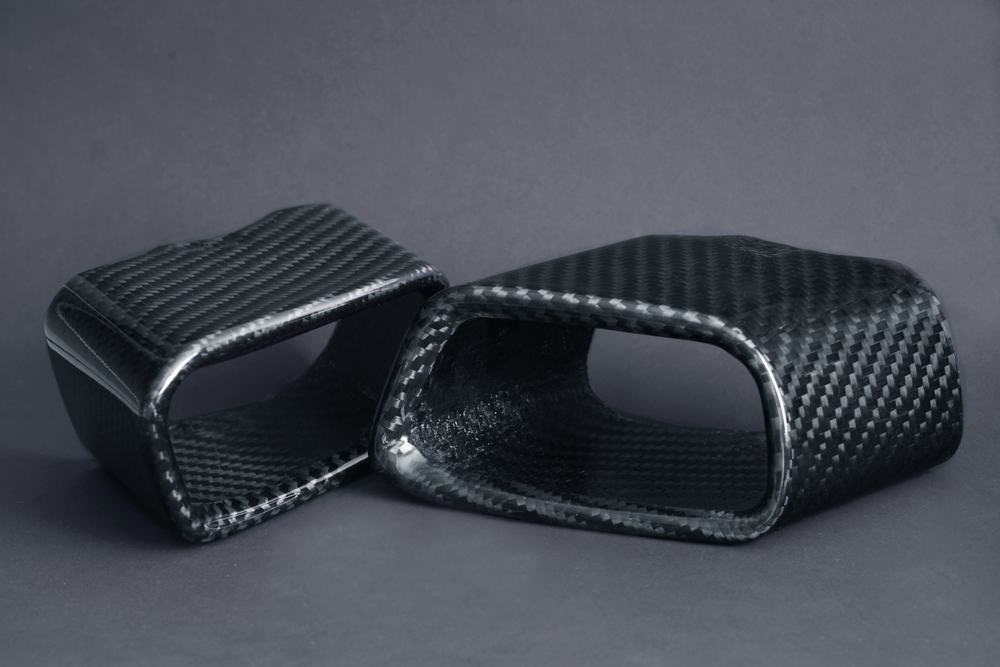Vacuum Molding Carbon Fiber Parts
Experience a revolution in composite manufacturing with vacuum molding carbon fiber, delivering unparalleled precision and efficiency. This cutting-edge technique, a leader in material engineering, harnesses the principles of composite prepreg layup—a process involving pre-impregnated resin and reinforcing fibers—combined with vacuum bagging. Together, they establish a groundbreaking standard in producing top-tier carbon fiber components.
The Composite Vacuum Bagging Process Explained
Vacuum bagging in composite manufacturing is vital for ensuring quality and efficiency in carbon fiber parts production. This process is critical for:
- Achieving even pressure distribution during curing, essential for uniform material properties.
- Removing excess resin and air, leading to denser, stronger composite structures.
- Producing a high-quality surface finish, reducing the need for further post-processing.
- The process aligns with the industry standards for the vacuum bagging process for composites, ensuring high-quality outcomes.
How to Vacuum Bag Fiberglass & Composites
A step-by-step approach to vacuum bagging for fiberglass and composites includes:
- Preparing the Mold: Clean and apply a release agent to the mold.
- Laying Up: Arrange the fiberglass or composite materials on the mold.
- Applying the Vacuum Bag: Seal the layup with a vacuum bag, ensuring an airtight environment.
- Creating the Vacuum: Use a vacuum pump to remove air and tightly conform the bag to the layup.
- Curing: Allow the part to cure under vacuum pressure.
- Finishing: After curing, remove the bag and complete any necessary finishing tasks.
Techniques in Vacuum Bag Composite Layup
Effective vacuum bag composite layup involves:
- Uniform Material Placement: Ensure materials are evenly distributed to prevent weak spots, crucial for maintaining consistent strength throughout the part.
- Air Removal: Focus on eliminating trapped air to avoid voids in the final product, ensuring structural integrity.
- Temperature Management: Properly control curing temperatures for resin systems to achieve uniform curing and optimal bond strength.
Vacuum Molding Carbon Fiber vs. Fiberglass Vacuum Molding
In composite manufacturing, vacuum molding carbon fiber is preferred for its high strength-to-weight ratio, making it ideal for demanding applications like aerospace and automotive industries. Fiberglass vacuum molding, while more cost-effective, is less performance-oriented and commonly used in general-purpose composites due to its good strength and affordability. Carbon fiber excels in applications where lightweight and high strength are crucial, whereas fiberglass is chosen for cost-sensitive projects.
Benefits of Vacuum Carbon Fiber Molding
Vacuum carbon fiber molding is renowned for its key advantages, making it a preferred method in various industries:
Strength and Durability: The parts created through this process are exceptionally strong and capable of withstanding considerable stress.
Lightweight: The lightweight nature of vacuum-molded carbon fiber parts is essential in applications where weight reduction is a priority.
Precision: The process allows for high dimensional accuracy, crucial for complex shapes and designs that require tight tolerances. This precision is especially valuable in the manufacturing of components for industries where exact fit and function are paramount.
Aesthetic Quality: Vacuum molded carbon fiber parts have a premium, sleek finish that is visually appealing. This aesthetic quality makes them highly desirable for visible components in consumer products, such as electronics, high-end automobiles, and sports equipment, where appearance is as important as functionality.
Transform Your Projects with Smartech’s Reusable Vacuum Bagging
Vacuum molding carbon fiber parts represents a technique marked by its precision and efficiency, leading to superior material properties. Integrating this method with Smartech’s Reusable Vacuum Bagging for the Composite Industry can further elevate the efficiency and sustainability of manufacturing processes.
Smartech’s Reusable Vacuum Bagging solutions provide:
- A cost-effective approach, reducing waste and material costs.
- An environmentally friendly option by minimizing disposable waste.
- Enhanced time efficiency, offering quicker setup and cleanup in production processes.
Incorporating Smartech’s reusable vacuum bagging products in composite manufacturing leads to a notable improvement in the quality and efficiency of production processes.
Explore Smartech’s Innovations Today
Utilize Smartech’s Reusable Vacuum Bagging solutions in your composite manufacturing projects. These innovative products are specifically crafted to complement vacuum molding carbon fiber techniques, focusing on enhancing quality, efficiency, and sustainability.
Looking for More Information?
Check out our Resources or Contact Us

